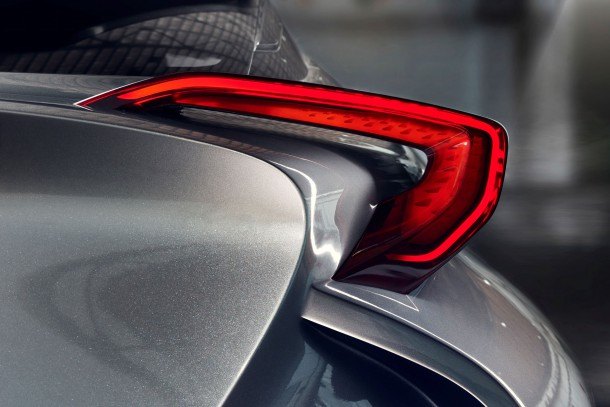The Toyota C-HR is Exactly What Scion Needs To Succeed

Toyota’s compact crossover C-HR will be making another auto show appearance before its production version is unveiled next year at the Geneva Auto Show, and its quite possible that the model could make or break Scion’s future in the U.S.
Toyota hasn’t released many details about the C-HR, other than to say that it’ll be built on the same, global TGNA structure that the next-generation Prius is built on and would have a similar hybrid powertrain.
The small crossover would fit entirely within Scion’s wheelhouse of younger buyers who apparently can’t get enough of crossovers, and would help make relevant a brand that is, um, struggling with sales.
In addition to the updated images, Toyota says it has brought the C-HR closer forward to production by adding two more doors and changing the roof color from two-tone to glossy black. That gigantic belt-line detail on the rear doors and impossibly sharp rear tail lights probably shouldn’t won’t make it to production.
(It’s possible that the model could be shared between Toyota and Mazda under their growing partnership.)
This year, Scion will release a reskinned Mazda2 sedan in the States as the Scion iA and a rebadged Corolla hatchback as the Scion iM to replace outgoing or slumping models that have fallen flat at dealerships. Both new models may be sold at dealers under a new “Pure Price” format that would allow buyers to all-but purchase their cars online and accept delivery at a dealership, which could put the automaker one-step closer to again connecting with younger buyers who view cars — and car buying — substantially different from their parents. Another step: a small crossover that sell like crazy right now.
Scion sales have slumped since its zenith seven years ago. The brand ranks 30th among automakers in sales so far this year.

More by Aaron Cole
Latest Car Reviews
Read moreLatest Product Reviews
Read moreRecent Comments
- Lou_BC Well, I'd be impressed if this was in a ZR2. LOL
- Lou_BC This is my shocked face 😲 Hope formatting doesn't fook this up LOL
- Lou_BC Junior? Would that be a Beta Romeo?
- Lou_BC Gotta fix that formatting problem. What a pile of bullsh!t. Are longer posts costing TTAC money? FOOK
- Lou_BC 1.Honda: 6,334,825 vehicles potentially affected2.Ford: 6,152,6143.Kia America: 3,110,4474.Chrysler: 2,732,3985.General Motors: 2,021,0336.Nissan North America: 1,804,4437.Mercedes-Benz USA: 478,1738.Volkswagen Group of America: 453,7639.BMW of North America: 340,24910.Daimler Trucks North America: 261,959
















































Comments
Join the conversation
It's the 2016 Isuzu VehiCROSS!
Does kind of resemble an Isuzu VehiCROSS. Maybe it is the offspring of a VehiCROSS and a Cube.